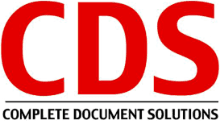The average employee prints 10,000 sheets of paper annually. This means that an office of 20 workers will consume 200,000 sheets of paper yearly. That’s a lot of paper! And not only is all that paper a waste, it’s also costing your business money.
If your business is still heavily reliant on paper documents and traditional filing systems, it may be time to consider switching to a paperless office.
What is a paperless office?
A paperless office is a workplace that primarily uses digital documents. Some businesses prefer the term “paper-light,” as they cannot completely eliminate paper files due to compliance or process requirements.
Why should your business go paperless?
Your business can enjoy the following benefits by adopting a paperless system:
- Reduced environmental impact: Going paperless means fewer trees need to be cut down to meet the demand for paper, and fewer emissions are produced in manufacturing and shipping paper products.
- Save money on paper, printer, and storage costs: You’ll no longer need to purchase paper and printer ink as frequently, and you may be able to reduce your storage costs by scanning and storing documents electronically.
- Improved efficiency: It’s easier and faster to search for electronic documents than it is to hunt through filing cabinets. You can also quickly share documents with clients via email.
- Reduced paper clutter: A digital filing system can help you tidy up your desk and your entire office space.
- Improved security: Digital storage systems keep your documents safe and secure through features like encrypted data storage and password protection.
Going paperless means fewer trees need to be cut down to meet the demand for paper, and fewer emissions are produced in manufacturing and shipping paper products.
Related article: 8 Effective ways to reduce print costs for your business
How can your business go paperless?
Going paperless is a fairly simple process — just follow these steps:
1. Set a goal
Establish a company-wide goal to get your entire organization involved in reducing paper usage and waste. When setting goals, use the SMART approach:
- Specific: The goal must be well-defined, narrow, and unambiguous so you have a better chance of accomplishing it.
- Measurable: You need to have metrics to qualitatively or quantitatively evaluate your progress toward your goal.
- Achievable: Your goal should be attainable within a definite period.
- Relevant: Your goal should align with your company’s long-term objectives and values.
- Time-based: Your goal’s timeline must be reasonable.
For example, your goal could be to reduce paper consumption by 10% within six months or to eliminate the use of paper altogether within two years. These are clear statements that your employees can rally behind to accomplish your company’s paper reduction goal.
2. Evaluate your paper usage
Take a closer look at how your company uses paper on a daily basis. Do you rely heavily on printed documents? Do you use a lot of paper for marketing materials or internal memos? By evaluating your paper usage, you can identify which business areas would benefit most from going paperless.
3. Use technology to your advantage
Once you know where you can cut back on paper usage, it’s time to implement paperless technologies. A few options to consider include:
- Using digital document sharing and storage platforms like Microsoft 365 and Google Workspace
- Using electronic signatures to sign documents digitally
- Leveraging mobile software that can scan physical documents and turn them into digital ones
Using these technologies can reduce your reliance on paper and make your business more efficient.
4. Train your employees
While training employees on how to use new technology can be time-consuming, it's crucial to promoting paperless operations.
You can hold meetings to introduce employees to your paperless initiatives and then provide hands-on training to show them how to use new technology. Give your employees time to adjust to the new system and invite them to give honest feedback whenever possible.
5. Monitor and adjust accordingly
Once you’ve implemented your paperless initiatives, you need to monitor your progress regularly to see if you’re meeting your goals. If you find that you’re not reducing paper usage as much as you’d like, take a closer look at your processes and make adjustments accordingly.
Complete Document Solutions can help you go paperless by optimizing your print environment and processes. We’ll also work with you to implement solutions that will improve your business’s productivity and efficiency. Talk to us today to learn more.



Leave a comment!